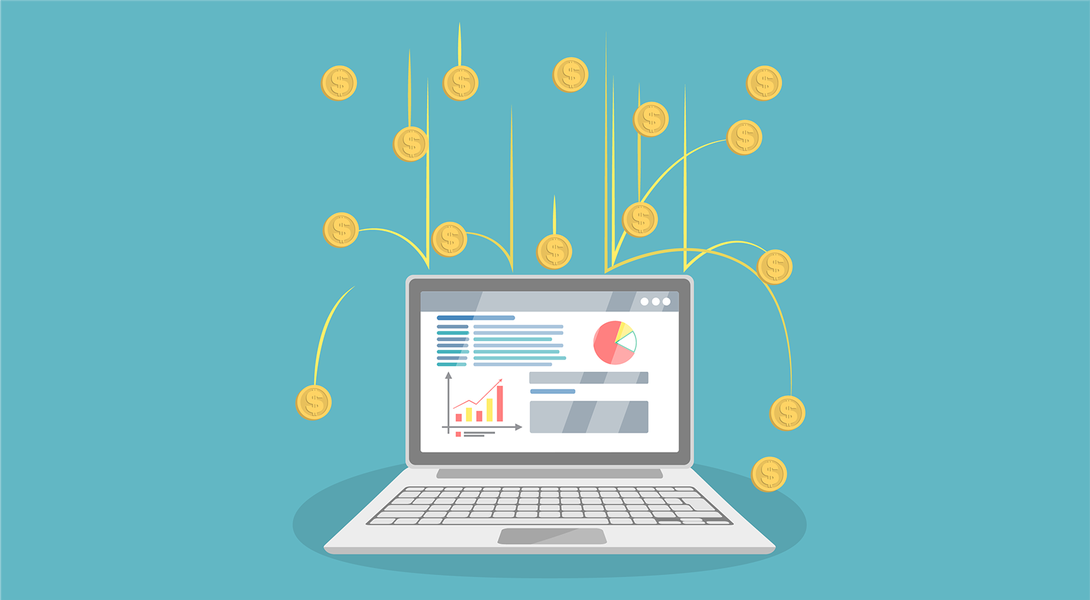eCommerce thrives in a world of data. As every click and transaction is made via online platform, you have a wealth of data at your disposal that brick-and-mortar sellers could never imagine. Just think how much information you get from even a single purchase: Transaction data, financial details, customer demographic information, on-site browsing behaviors.
It’s an environment that supports data-driven strategy; with a nonstop influx of customer data, eCommerce providers have more tools than ever to tailor their strategies to address their markets’ needs.
But to put these ideas into action, you need to focus on the metrics that matter.
The Most Important eCommerce Metrics
There’s no shortage of eCommerce metrics out there, and most companies don’t have the resources to spend all day corralling numbers. Rather than take a scattershot approach, we recommend that you focus your efforts on the specific metrics that will improve your company’s ROI.
Conversion Rate
Conversion rate is the “king” of eCommerce metrics. According to a study by B2BecNews, over half of B2B sellers agreed that it was crucial to track conversion rates. It’s easy to see why. Even tiny fluctuations in conversion rate percentages can cause huge impacts on revenue.
Naturally, there’s plenty of discussion about how to optimize conversion rates for eCommerce. The average eCommerce conversion rate across all industries sits at around 2.86 percent, though it’s not uncommon for businesses to reach five percent, 10 percent, or even higher with the right strategy.
Every dip in conversion rate means sales left on the table, so it’s important to come to grips with this metric before any other. Use the tools at your disposal to review your page’s eCommerce experience and see where you’re coming up short.
You might find that a disproportionate number of users bounce after viewing your landing page, or maybe they never even make it that far. Use Google Analytics and your own website user data to look at what actions each person takes. There’s no sure way to tell why users aren’t buying, but an exhaustive audit of your web experience will shore up any notable problems.
Customer Acquisition Costs
How much does it cost for you to acquire a new customer? This is your customer acquisition cost (CAC)—an important metric for determining how much potential revenue you’ll gain from a customer interaction.
It’s an investment to bring in new customers through marketing. But if they don’t spend enough to justify the cost of acquisition, you’ve actually lost money by gaining a customer (although, maybe that’s ok – see “customer lifetime value” below). This is why CAC is so important.
You’ll have a different CAC for every marketing channel you use. Some—such as PPC campaigns—offer great visibility but come with high CAC costs that decrease your potential ROI. Instead, prioritize marketing channels that drive traffic at low cost: social media, in-person referrals, email marketing, and so on.
Customer Lifetime Value
Customer lifetime value (CLV) is the other side of the CAC metric. CLV describes how much revenue a customer provides over his/her entire relationship with the company. Naturally, this is great information for financial forecasting.
CLV is a tricky metric to measure at scale, though it’s simple enough to understand. You can calculate a customer’s CLV by taking the average value of his/her transactions and multiplying it by how many times s/he’s purchased over a time period. Of course, you’ll need to subtract his/her CAC from this, but when you’re done you should have a good idea of what the customer is bringing to the table.
Marketing guru Neil Patel goes into detail about how to calculate CLV across an entire organization, so if you’re interested in applying this metric on a bigger scale, check out his rundown.
Email Opt-In Rate
Email marketing may seem like a dated marketing tactic, but it’s still capable of generating an ROI of $44 for every $1 spent—making it one of the most enduring tools in the eCommerce provider’s arsenal. It’s a great tool for nurturing leads and encouraging participation with your company, and as a metric, it offers a good view of how many potential leads you have in the funnel.
Track how many subscribers you’re bringing in and make sure you measure each source individually. Knowing how many leads came from your landing page vs. social media campaign vs. personal referral can provide great information about the health of your marketing channels.
For a more advanced metric, if you’re able to utilize customer data tagging as part of your eCommerce platform, you will attribute sales metrics to email subscribers even if they aren’t specifically ordering through email messaging.
Make Sense of Marketing Metrics
There’s no such thing as useless data. Every interaction you have with a customer tells you something you can use in future decisions. But as noted above, some metrics provide more helpful data than others, which is why we focused on metrics essential to profitability:
-
Sales conversion rates on your website
-
Cost of acquiring new customers
-
Average revenue brought in per customer
-
Email opt-in and subscriber rates
Taken together, these metrics offer a great view of financial performance that eCommerce providers can use to push their revenue further. Tracking and applying data is a slow process, to be sure—but once you get the hang of it, you’ll see that there’s no better way to grow your company.


